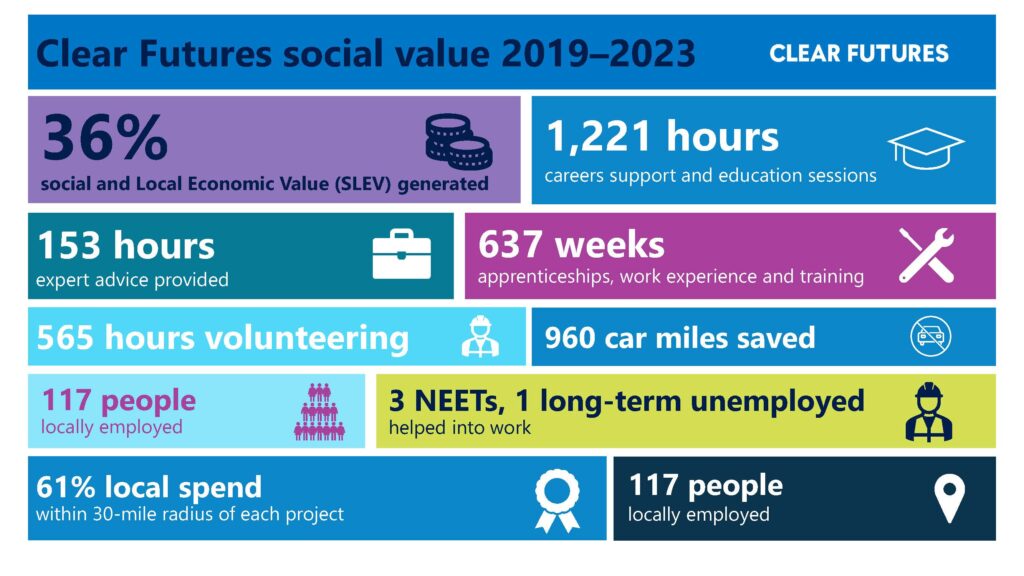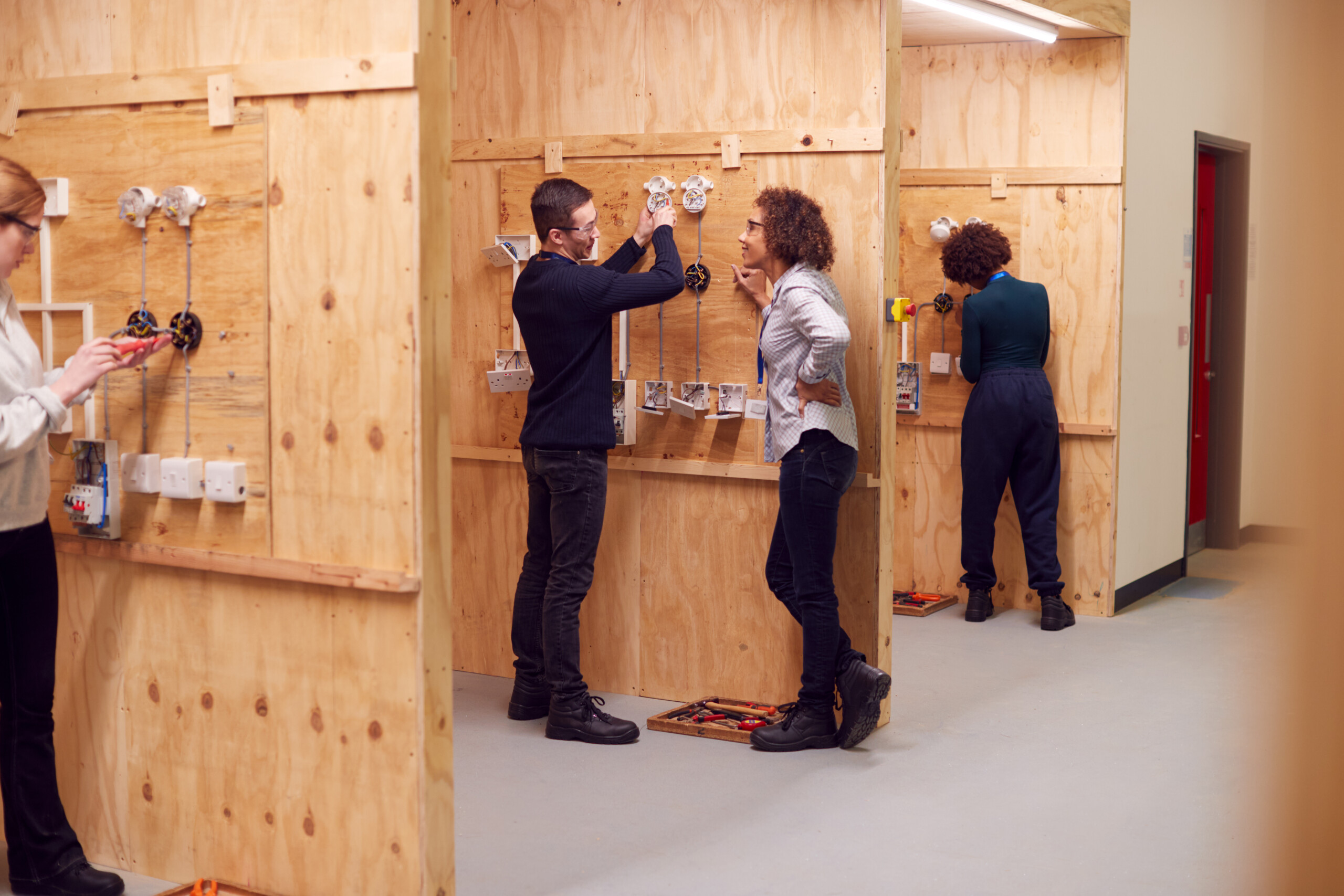Net zero at a local level: the scale of the challenge and the art of the possible in the built environment.
Reflections from the UK Partnerships Hub boardroom, sponsored by Clear Futures.
The conference took place on the 14th of June 2022 at the Marriott Worsley Park Hotel & Country Club, bringing together a collection of public sector guests, such as Matthew Vickerstaff from the IPA, Peter Reekie of SFT, and private sector representatives from the likes of Knight Frank and P2G.
The Clear Futures net zero retrofit lunchtime debate was attended by;
- Jim Taylor, Clear Futures Non-executive Chair
- Keith Edwards, Clear Futures Partnership Director
- Dr John Hindley, TwelveTrees Consulting Director
- Jeya Sivasubramaniam, SNRG Head of Growth
- Sean Owen, GMCA Head of Low Carbon
- Nigel Badham, Knight Frank Partner
The key message to come out of the discussions was clear: the public sector cannot reach net zero on its own and collaboration is essential. Local government especially, does not have the capacity or resources needed to deliver decarbonisation programmes as well as its day-to-day responsibilities.
Bringing capabilities together to unlock public sector decarbonisation challenges
Collaboration of political, public and private sector efforts is needed to deliver the requirements of net zero – with the private sector helping meet some of the key gaps the public sector faces in terms of resource, green skills, investment and more.
Integrated approaches such as partnership delivery models – Clear Futures and Go Neutral are two examples – bring collective groups of experts and stakeholders to the table at an early stage. This type of engagement gives local authorities an understanding of not only what they need from their projects and programmes, but exactly what is achievable and what options are realistic.
Consider this example: through its partnership with Bolton Council, Clear Futures brought together multiple public sector organisations to develop a potential heat network solution they could all use. Keith Edwards, Partnership Director for the Bolton Partnership, explained that this resulted from “using the team on the ground to fully understand the priorities, then linking that back up to the strategic management plan”.
This approach was welcomed by public sector attendees who agreed that the main hurdle to overcome is the initial development of a project – defining the needs and vision, and a project brief that can be delivered and moves public sector bodies to a point where they can engage with the private sector.
But the obstacles are not one-sided. There was also discussion around barriers the private sector faces when engaging with the public sector. Such as the complexity of retrofitting public buildings, and decarbonisation programmes across estates that have complicated ownership and management – the education sector being a prime example. So a more accessible interface is a necessity if we’re to engage with organisations from central and local government and bring together interested parties to discuss how they can work together.
Looking at new investment models to accelerate delivery
New and creative models are being developed across the private sector. But with few recognised examples of these working at a local government level to deliver tangible retrofit programmes, there remains some apprehension within the public sector about this approach.
But there is clear appetite amongst private sector guests around investment opportunities and innovative models, appreciating the potential and scale of investment needed to reach net zero by 2050 in the UK.
SNRG is a Centrica and Antin backed developer of smart local energy systems that support the transition to zero carbon. Through aggregating technology, they maximise the use of locally generated renewable energy and provide an end-to-end service designing, funding, building and operating SmartGrid solutions. This substantially reduces the risk, cost, carbon, and complexity for residential, industrial and commercial, and public sector clients, residents and occupants.
Clear Futures has the capabilities to work with public sector partners to identify the best-fit investment model for specific opportunities, connecting with a range of investors to bring together the investment required to unlock a project or programme into delivery.
Similarly, the Go Neutral framework procured by GMCA and its ‘Integrated Smart Energy Solutions’ is geared to third party funded opportunities with the flexibility for shared investment and revenue under the contract structure.
The unclear benefits of decarbonisation
There’s still work to be done to debunk myths around net zero and what it means in real terms. To overcome scepticism around the revenue benefit of decarbonisation measures, clearer messaging and case studies are needed to demonstrate the reality of payback and cost savings achieved.
The Net Zero Estate Playbook published by government sets out the ‘No Regret’ principle to protect public spend and make sure the investment in net zero is worthwhile. But more work needs to be done to promote the efficiencies that can be delivered. Certain measures such as solar PV can take as little as five years to achieve payback and see the efficiencies realised.
Addressing the green skills challenge to unlock opportunities
Green skills and supply chain challenges were discussed as many have struggled to find the necessary capabilities to deliver programmes, especially those more complex such as social housing retrofit.
One key way to overcome the green skills shortage is through a joined-up approach – whereby the public and private sectors come together to better understand where there are gaps and work with local education organisations to develop upskilling and training programmes.
The Go Neutral framework uses local supply chain partners to support SMEs and the growth of green skills, taking advantage of upskilling provisions and programmes such as the GMCA Skills for Growth programme and Green Spaces fund.
Debating the cost of reaching net zero
While funding such as the PSDS scheme has provided opportunity for the public sector, the reality of differing and sometimes competing grants means there’s no overarching, well-considered strategic approach to decarbonisation measures.
With bids typically having tight deadlines for the business case, it becomes a massive undertaking for a local authority without a net zero strategy to identify which projects to put forward for funding.
The result? Rushed bids that focus on one-off projects which will improve the efficiency of a small number of assets – but ignore the bigger picture and wider retrofit challenge.
Taking a more holistic approach across an estate, i.e. looking at longer-term solutions, can provide better benefits. But the greater the complexity of measures, such as heat networks or smart energy grids, the longer to develop a business case for funding. So more often than not, these opportunities are missed.
One public sector speaker noted “Authorities should not chase the money. If they become an informed client, they can then decide if the money fits the outcomes and objectives they want to achieve”.
PFI contracts and the latent resource
Lack of collaboration between customers and their PFI providers means there’s often no agreement on using the resource in a contract to decarbonise public sector assets. Again, real opportunities are being missed here: proactive engagement with the mechanisms in PFI contracts and lifecycle funds can identify ways to invest in measures that deliver long term benefits for the operation and maintenance of an asset.
Increasing efficiencies through behavioural change
Another easy win from a more joined-up approach around sustainability and FM delivery is around behavioural change. By engaging with end users, we can achieve greater energy savings and carbon reduction – a simple but effective step. One local authority noted how they introduced office employees to the building management team who explained how the building worked and ways occupants could play their part in ensuring it operated at optimum efficiency.
Through the PSDS projects Clear Futures delivered with Bolton Council, activities were put in place to upskill the council’s internal teams. Experts including AECOM and Vital Energi were asked to support feasibility and assessment of council buildings. The result of this experience and knowledge sharing means the council team now have a much better understanding of how to use buildings more efficiently, as well as retrofitting and decarbonisation projects.




